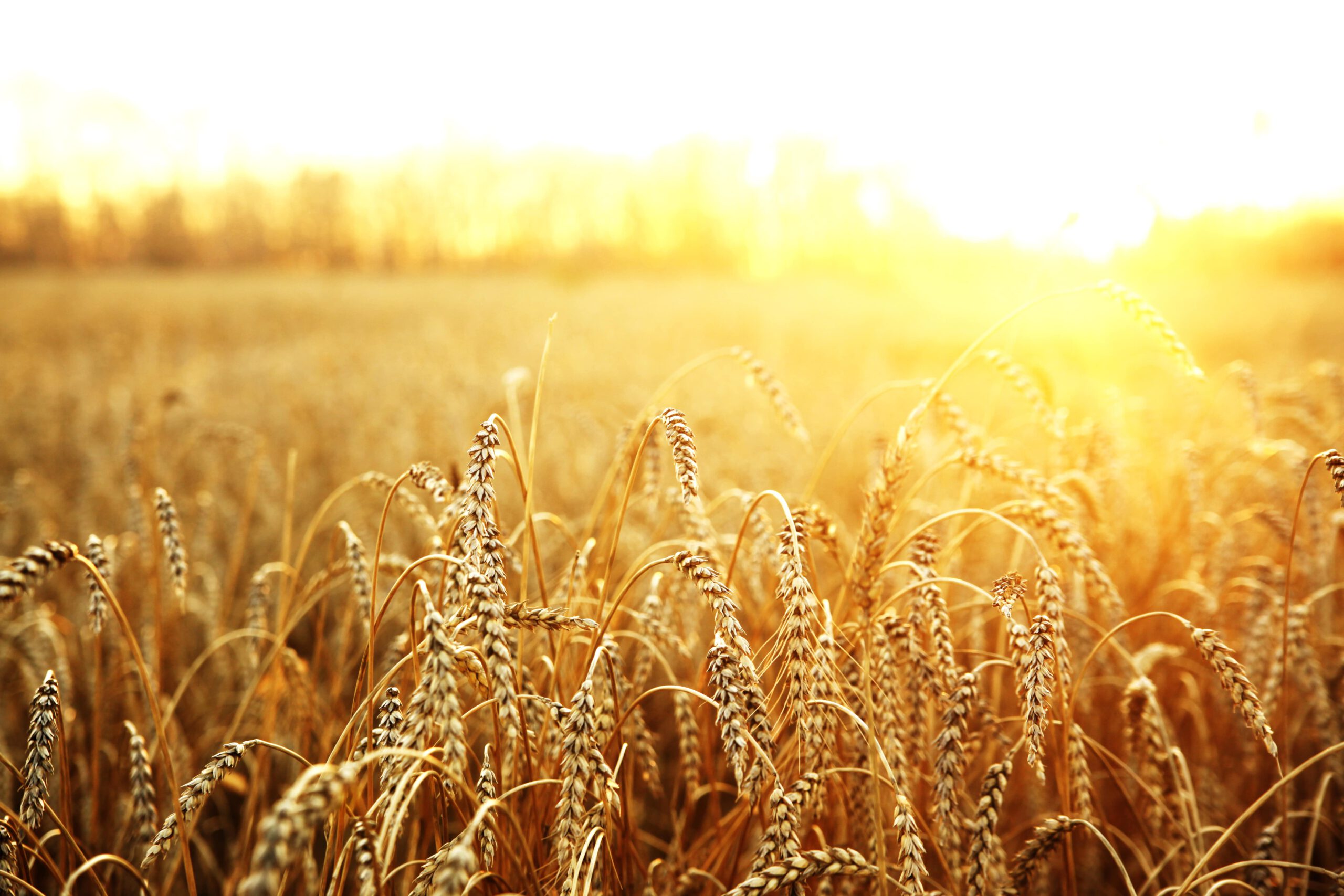Explainer Focus
- Global grains shortages are not merely critical for food security.
- Corn also has uses in fuel, textiles, cosmetics and even pharmaceuticals.
- With supply tightening, will there be enough to go around?
The US and China are the world’s largest corn producers, responsible for over 55% of global output. Other major producers are Brazil, the EU, Argentina, Ukraine, India, Mexico, Indonesia, South Africa, and Russia.
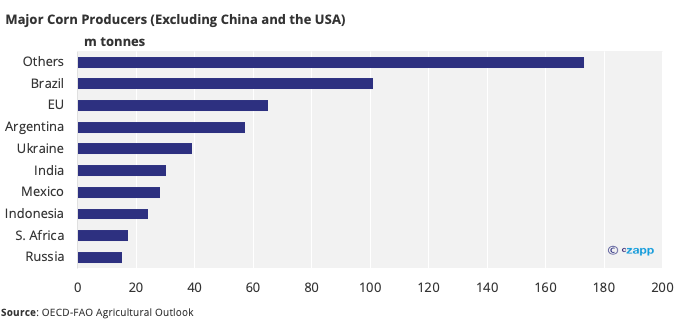
With global production above 1.1b tonnes per year, why is this commodity so important and where does it go?
Animal Feed
Most corn is used for animal feed, apart from in Mexico, where corn was first discovered. In Mexico, white corn is primarily used for human consumption, while much smaller quantities of yellow corn are produced for animal feed.
About 65% of corn produced is used as animal feed. There have been criticisms that this corn should be used to satisfy human demand, but most the grains and by-products consumed by animals aren’t fit for human consumption.
The main benefit of feeding cattle corn, rather than grass, is that the cattle grow much faster. Feedlot calves are sent to slaughter at between 14 months and 18 months of age, whereas grass-fed cows are sent at between 18 months and 24 months.
Feedlot calves also tend to weigh more due to the corn diet, coming in at about 1,350 lbs compared with the average 1,200 lb for grass-fed cows. This makes production more efficient for farmers and generates more meat to feed a growing population.
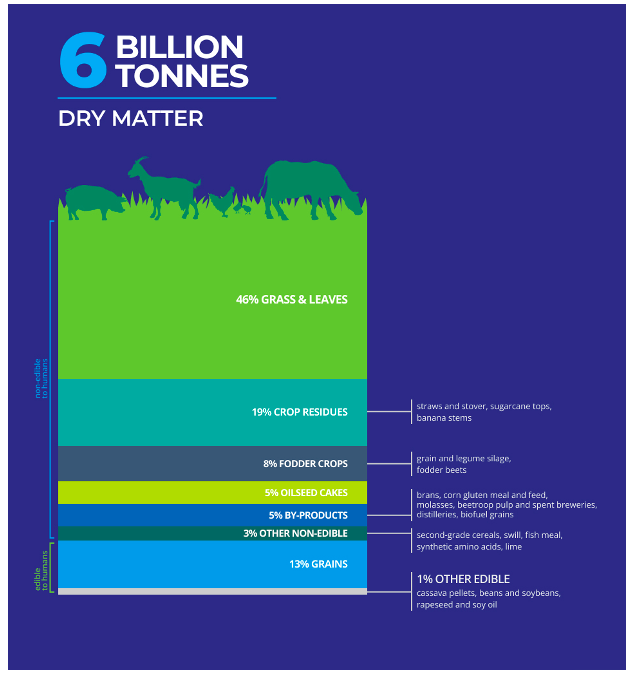
Fuel Ethanol
The second-largest use of corn is for fuel ethanol, and this will undoubtedly become more important as developed countries transition to more environmentally friendly fuels.
Around 190m tonnes of corn is used to make ethanol each year at present, representing about 17% of global production. Global ethanol demand should increase with crude oil rising, as gasoline prices closely track those for crude.

The US is the world’s largest producer of ethanol, with output hitting 13.9b gallons in 2020. Brazil is the second largest, producing 8.1b gallons the same year. Whilst the US and Brazil collectively produce 84% of the world’s ethanol, the US relies on corn for production, whilst Brazil uses sugarcane as a feedstock.
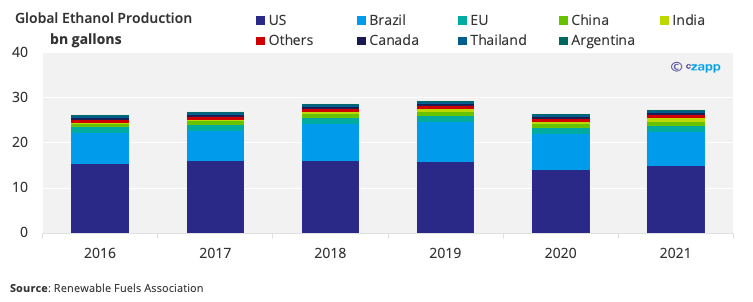
Brazilian flex-fuel cars can run on fully hydrated ethanol (E100), as well as a gasoline-ethanol blend. In some European countries and the US, E85 can also be used.
Steps are being taken in certain countries such as the US and the UK to increase ethanol use in cars, although cars typically use just a 10-15% fuel blend as it stands. Last year, India also brought forward its target to sell E20 fuel from 2030 to 2025.
However, the goal of using ethanol as a fuel for cars is a long way off. While it’s attracting much more attention and investment today, still only about 60 million cars globally are flex-fuel vehicles, with the vast majority concentrated in Brazil. This is just 4% of the total global vehicle fleet of over 1.4 billion cars.
More and more manufacturers are creating flexible fuel vehicles. As of December 2014, almost 50% of new vehicles produced by Chrysler, Ford, and General Motors are flex-fuel. It’s also likely that Russia’s invasion of Ukraine will act as a catalyst for ethanol use as a fuel in the EU, given the bloc’s dependence on Russia for its fuel and efforts to diversify.
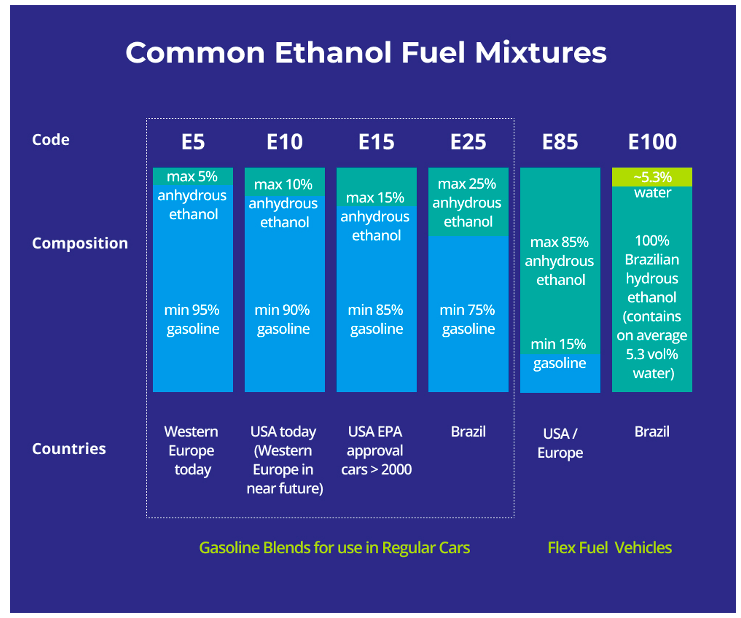
Food & Cereals
Human consumption of corn began as a traditional fermented drink in Mesoamerica. Now, only a small proportion of corn is used for human consumption, most of which is not fresh, but processed.
Mexico is the largest consumer of corn on a per capita basis, coming in at 136.5kg per person per year. That’s about 1,123 ears of corn per person per year, or just over three per day. Globally, per capita consumption is just under 19kg per year, not even half an ear of corn per day. This equates to 165 calories of daily intake per day.

Starch
One by-product of corn is corn starch. As well as being used as a household food ingredient, corn starch is versatile and easily modified, meaning it’s often found in adhesives, paper products and textile manufacturing.
Oxidised corn starch can even be used as a wood adhesive – when combined with wood chips, it creates particleboard.
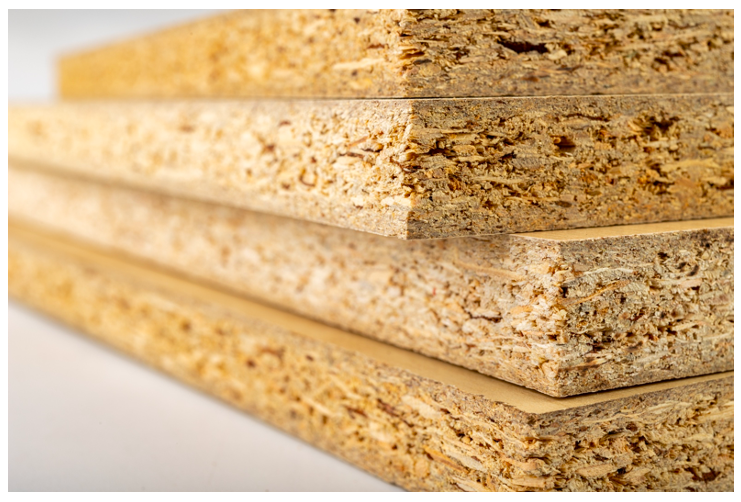
Sweeteners
You may have heard of High Fructose Corn Syrup (HFCS), so it may not be surprising to find out it is also made of corn. This is made by separating the corn starch from the gluten and adding glucose to create HFCS.
HFCS is a versatile sweetener and is often found in soft drinks, processed foods, cereals, and baked goods. Manufacturers often prefer HFCS because the manufacturing cost is cheaper than sugar and it has preservative properties.
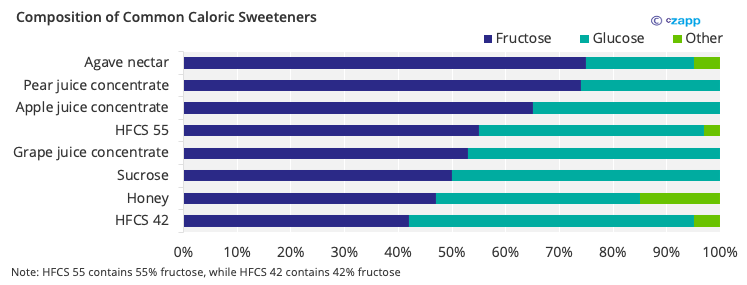
The US is the largest consumer of HFCS on a per capita basis (25kg per person per year) and it’s also the largest global producer. Most of its HFCS is consumed domestically, with just 1.1m tonnes exported in 2020. But China is a growing market as its sugar free drinks market reached 11.78 billion RMB in 2020, up from 1.66 billion RMB in 2014.
As sugar consumption flattens or falls in most parts of the world, this should drive higher demand for alternative sweeteners such as HFCS. We write extensively about peaking sugar consumption in our Consumption Case Studies.
Corn Oil
Yet another corn by-product is its oil, which is commonly used for cooking, as well as in cosmetic products. It’s mainly produced and consumed in the US, as well as in China and Brazil.
Corn oil can lower cholesterol when used in cooking but there are also many benefits to using it in cosmetics due to its high content of nutrients and antioxidants.
Corn oil could also be used as a substitute for sunflower oil, which is facing supply constraints due to the Russia-Ukraine war. Both corn oil and sunflower oil have very similar smoke points and other properties, although corn oil has a slightly higher level of saturated fatty acids.
The market has gained traction in recent years due to consumers taking a step back from commonly used palm oil over environmental concerns. The Ukraine war has also pushed demand for alternative oils as sunflower oil exports were hit by the war in Ukraine.
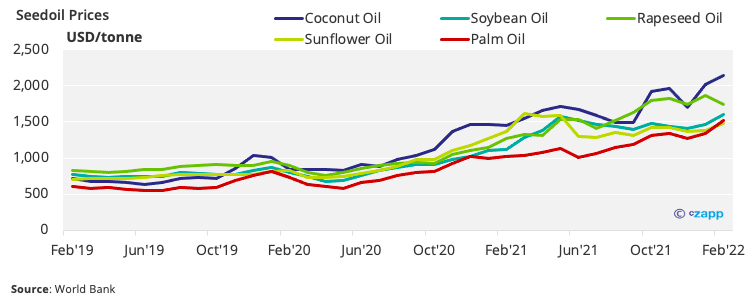
Drugs
Corn has adhesive properties as mentioned previously, but it may surprise you to learn that it’s often used as a disintegrant and binder in pharmaceuticals. That means it enables tablets and capsules to dissolve and release the drugs.
Not only this but corn silk – the little strands of thread on the corn ear – can be used for medicinal purposes. It is considered a herbal remedy and its use can be traced to the Mayans, who used it to treat a variety of ailments, including bladder and urinary infections, renal damage and even diabetes by balancing blood lipid levels.
Carbon Dioxide
Remember all the recent news articles about a CO2 shortage? You may not have realised until recently just how much of the food chain it’s needed for. From its use as a refrigerant to keep good cold to promotion of plant growth, and from animal slaughter to packaging, it’s a widely used component of the food supply chain.
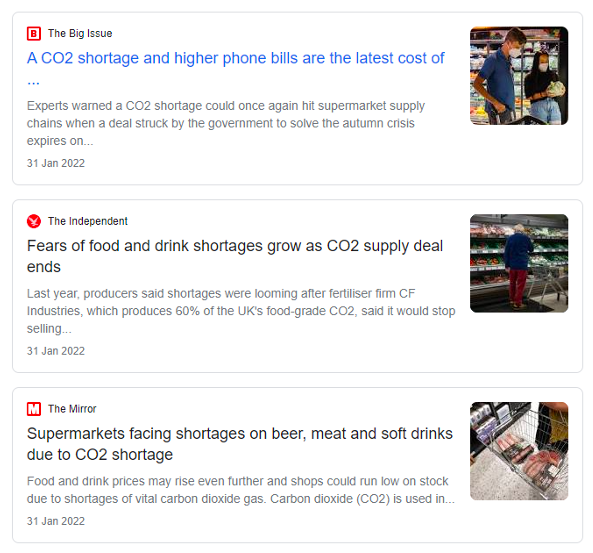
But you probably didn’t know that CO2 is also created from the grain fermentation process used to produce ethanol. As the gas comes out in raw form, it’s generally been considered useless, but now, with proper treatment, bottlers can take advantage of the CO2 produced by ethanol to bottle and chill drinks.
In 2018, 220 ethanol production facilities in the US produced 50m tonnes of CO2 during the fermentation process. In fact, corn-to-ethanol plants are the fastest growing source of gas for the CO2 industry, which is rolling out various measures to capture the gas.
With more investment in these technologies, this could increase supply of CO2 and protect food and beverage firms against the volatility of the open market.
Beverages and Alcohol
Maize was a staple of the Mayan diet, but the first use of maize may have been in the form of liquor, according to scientists from the University of New Mexico. The high sugar content makes the plant ideal for fermentation, and since then, we’ve continued to use corn in this way.
The most popular type of alcohol made from corn is whisky. After milling, the corn is ground to meal and then water is added. After cooking, the starch is broken down into sugar and fermented into ethanol. The liquid is then distilled to create alcohol. These beverages generally have a very high alcohol content of at least 40% ABV.

It’s difficult to quantify the size of the grain alcohol market as it’s highly fragmented, but several sources estimate it to be worth around USD 11-12 billion.
Packaging & Textiles
Another use of corn is in producing a polymer called polylactic acid (PLA), which is becoming a popular alternative to petroleum-based plastics.
Producing PLA generates 68% fewer greenhouse gases and toxins than PET, but it’s also less flexible and has a low melting point of around 45 degrees Celsius, meaning it’s unlikely to displace PET any time soon. There’s also not nearly as much PLA capacity as there is PET production.
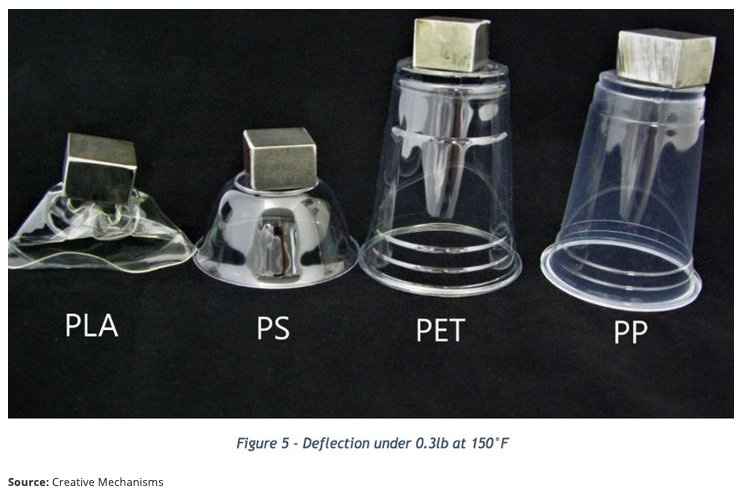
PLA has also begun to find applications in the clothing industry, but its low melting point presents an issue during the laundering process.
There are some criticisms of using PLA, which include its long biodegradation time – between 100 to 1,000 years in the wild, although it can decompose much faster in industrial composting facilities. Another issue is that PLA needs to be separated from regular plastic when recycled, going to compost rather than a recycling plant. The existing recycling infrastructure for PLA also falls far behind that of PET.
Concluding Thoughts
Although corn was discovered as and was traditionally used as a foodstuff, it’s now primarily an industrial input. Only a small proportion of corn is used in corn-type food, with most being sent for processing.
Corn use should continue to grow as the population increases, with the largest penetration still seen in animal feed.

Corn is cheap to grow, versatile and is part of almost everything we consume. This means the global grains shortage has implications not only for the food supply chain, but also for industries such as fuel, textiles, cosmetics and even pharmaceuticals.
Other Explainers That May Be of Interest…
The Brazilian Ethanol Industry
Insights That May Be of Interest…
